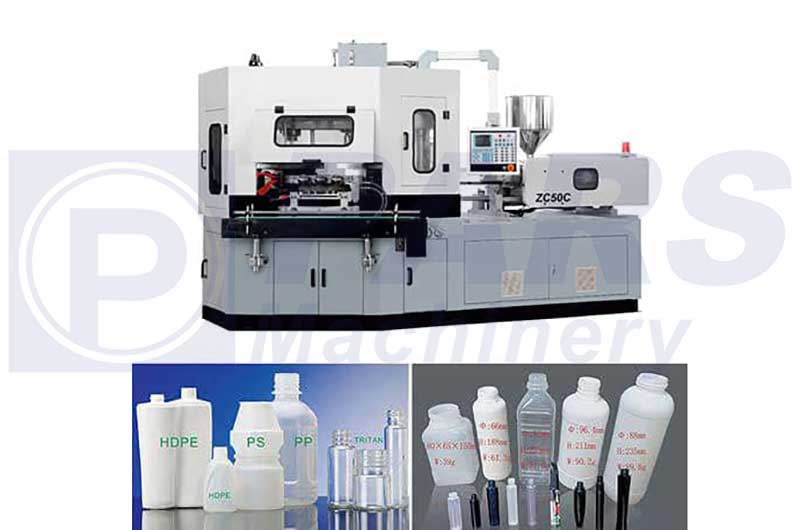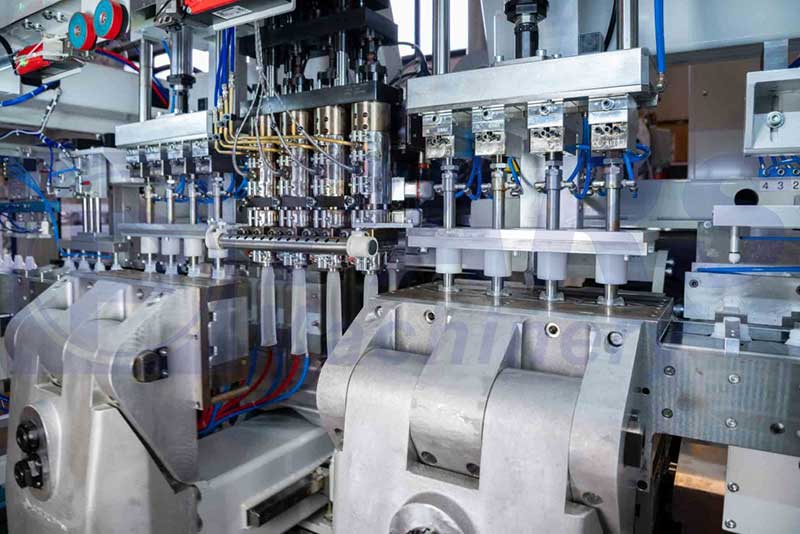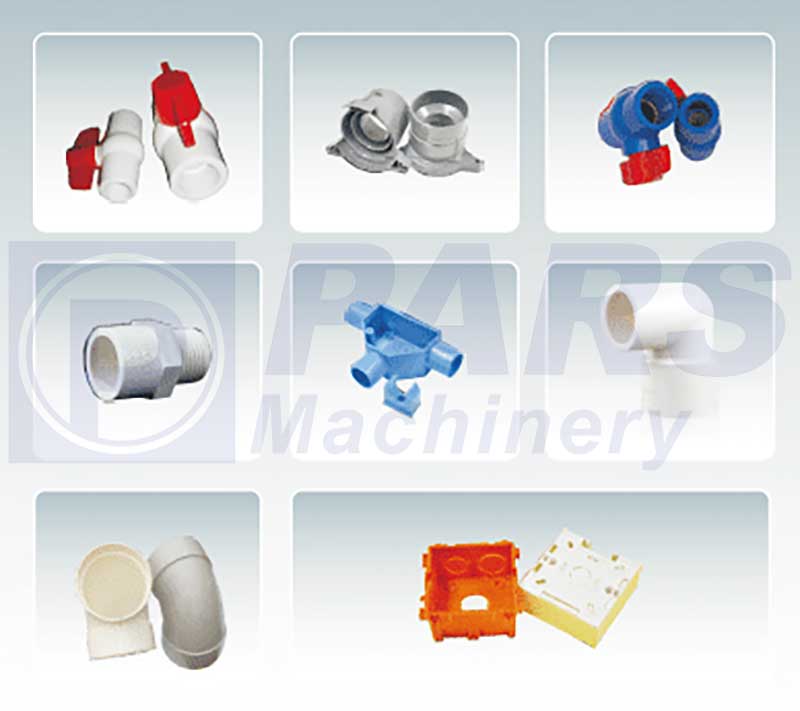You will get to know the machine for producing plastic cans and other plastic products, and if you intend to start working in this field, you will get the necessary information.

How are plastic parts made?
A variety of plastic product manufacturing methods have been developed to cover a wide range of applications, part geometries and types of plastics. For any designer and engineer working in product development, it’s important to be familiar with today’s manufacturing options and the new developments that will shape how tomorrow’s parts will be made. This article provides an overview of the most common manufacturing processes for producing plastic parts and provides guidelines to help you choose the best option for your application.
How to choose from various methods of producing plastic products
Consider the following factors when choosing a manufacturing process for your product: Form: Do your parts have complex structural features or have to withstand pressure? Depending on the geometry of a design, manufacturing options may be limited or may require significant design for manufacturing optimization (DFM) to make them cost-effective to manufacture. Volume/Cost Ratio: What is the total or annual volume of parts you intend to produce? Some manufacturing processes have high tooling and setup costs, but produce parts that are inexpensive on a per-piece basis. In contrast, low-volume manufacturing processes have low startup costs, but because of slower cycle times, less automation, and manual labor, the cost per part remains constant or declines slightly as volume increases. Timing: How quickly do you need parts or finished goods? Some processes create the first parts within 24 hours, while tooling and commissioning for some high-volume production processes take months. Material: What stresses and pressures should your product withstand? The optimal material for a given application is determined by a number of factors. Cost must be balanced with functional and aesthetic requirements. Consider the ideal features for your specific application and compare them to the options available in a given manufacturing process.
All kinds of plastics for the production of plastic cans
Plastics come in thousands of varieties with various base chemicals, derivatives and additives formulated to cover a wide range of functional and aesthetic properties. To simplify the process of finding the best materials for a particular part or product, we first look at the two main types of plastics: thermoplastics and thermosets.

Thermoplastics
Thermoplastics are the most common type of plastic that are used in various methods of producing plastic products. The main feature that distinguishes them from thermosets is their ability to undergo multiple freeze-thaw cycles without significant degradation. Thermoplastics are usually supplied as pellets or small sheets that are heated and formed into the desired shape using various manufacturing processes. The process is completely reversible, as no chemical bonding takes place, which enables thermoplastics to be recycled or melted and reused.
Common types of thermoplastic materials:
Acrylic (PMMA) Acrylonitrile Butadiene Styrene (ABS) Polyamide (PA) Polylactic acid (PLA) Polycarbonate (PC) Polyether ether ketone (PEEK) Polyethylene (PE) Polypropylene (PP) Polyvinyl chloride (PVC)
Thermoset plastics
Unlike thermoplastics, thermoset plastics (also called thermosets) remain permanently solid after curing. Polymers in thermosetting materials are cross-linked during a curing process induced by appropriate heat, light, or radiation. This curing process forms an irreversible chemical bond. Thermoset plastics decompose when heated rather than melt and do not reform when cooled. It is not possible to recycle the thermostat or return the materials to its original materials.
Common types of thermoset materials:
Cyanate ester Epoxy polyester Polyurethane Silicon Vulcanized rubber
Types of production methods of plastic products (production of plastic cans and bottles)
3D printing CNC machining Polymer casting Rotational molding Vacuum forming plastic injection extrusion blow molding machines
injection molding (various methods of producing plastic cans and bottles)
Plastic injection Injection molding (IM) works by injecting molten plastic into a mold. This industry is the most widely used process for the mass production of plastic parts.
Manufacturing process with plastic injection machine
Mold Setup: If the part has inserts, these parts are added manually or robotically. The mold is closed by hydraulic press. Plastic extrusion: Small pellets of plastic are melted and extruded through a heated chamber by a screw. Molding: Molten plastic is injected into the mold. Cooling and Release: The part is cooled in the mold until it is solid enough to be removed mechanically or with compressed air. Processing: Spurs, runners and any flash (if any) are removed from the part, often automatically as part of the mold opening. Injection molding machine molds are very complex and must be made with high precision to produce quality parts. Due to the high temperature and pressure, these molds are machined from metals such as hardened steel. Softer aluminum molds are cheaper, but wear faster, so they are usually used for shorter production runs. Injection molding machines can be used to produce very complex parts, but special geometries increase the cost significantly. Following design for manufacture (DFM) guidelines helps manage tooling costs. Making new molds for an injection machine can take months and costs can run into seven or eight figures. Despite the high initial costs, injection molding for high-volume applications cannot be compared to other methods. Once the tool is set up, cycle times take only seconds, and millions of high-quality parts can be produced at a fraction of the cost of all other manufacturing processes.
Materials used in plastic injection machines
Injection molding can be done with almost any type of thermoplastic. A method similar to the well-known reaction injection molding (RIM) is used to produce parts from thermosetting plastics.
The plastics that are commonly used in the injection machine are:
Acrylic (PMMA) Acrylonitrile Butadiene Styrene (ABS) Polyamide (PA) polyethylene terephthalate glycol (PETG) Polystyrene (PS) Polycarbonate (PC) Polypropylene (PP) Polyethylene (PE) Polyvinyl chloride (PVC) Molding with an extrusion machine (plastic can and bottle production machine) Extrusion molding works by pushing plastic through a mold. The shape of the mold is a section of the final part.

Manufacturing process with extrusion machine (plastic can production machine)
Plastic extrusion: The plastic is heated and pushed through a heated chamber by the sprue. Molding: Plastic is passed through a mold that creates the final shape of the part. Cooling: The extruded plastic is cooled. Cut or Coil: The continuous shape is coiled or cut to length. Extrusion machines are relatively inexpensive compared to other industrial machines such as CNC or injection molding because they are less complex and do not require such high levels of machine precision. Because of the simple shapes, the molds are also cheaper, with tooling costs a fraction of the cost of molds for injection molding. Just like injection molding, extrusion molding is a nearly continuous process, which makes the extruded parts very cheap. The forms and shapes that can be produced by extrusion are limited to products that have continuous profiles, such as T-sections, I-sections, L-sections, U-sections, and square or circular sections. Typical applications include pipes, hoses, straws, and window frame moldings. Materials used in the extrusion machine
Almost any extruded thermoplastic including:
Acrylic (PMMA) Acrylonitrile Butadiene Styrene (ABS) Polyamide (PA) polyethylene terephthalate glycol (PETG) Polystyrene (PS) Polycarbonate (PC) Polypropylene (PP) Polyethylene (PE) Polyvinyl chloride (PVC) Plastic production with blow molding machines (plastic can production machine) Blow molding or blow molding is a manufacturing technique used to create hollow plastic parts by blowing a heated plastic tube inside a mold to form a desired shape.

The process of making plastic (plastic can and bottle production machine)
Mold setup: Small plastic pellets are melted and molded into a hollow tube called a parison or preform (depending on the subtype of blow molding). Molding: The parison is clamped in the mold and blow with pressurized air until it takes the shape inside the mold. Cooling and releasing: The part is cooled in the mold until it is solid enough to be removed. The plastic can production machine operates at a much lower pressure than injection molding, which helps reduce equipment costs. Just like injection molding and extrusion, blow molding is a continuous process that can be fully automated, resulting in high production rates and low unit costs. The blown plastic industry is the most common process for creating large-scale hollow plastic products. Typical applications include bottles, toys, auto parts, industrial parts and packaging.
Materials used in the plastic industry
Blow molding can be done with a variety of thermoplastic materials, the most common examples of which are: polyethylene terephthalate (PET) Polypropylene (PP) Polyvinyl chloride (PVC) Polystyrene (PS) Polycarbonate (PC) Acrylonitrile Butadiene Styrene (ABS) Click on the following link to see how different types of plastic injection work, and the product production process by these devices: View how plastic injection and blow molding machines work. “Dear ones, you can see all kinds of plastic injection machines (injection molding) and blow molding machines (injection blow molding) on our website and contact us for purchase guidance and order registration.”

I appreciate that the bulletin board offers a range of pricing options for ad placements, catering to different budgets.